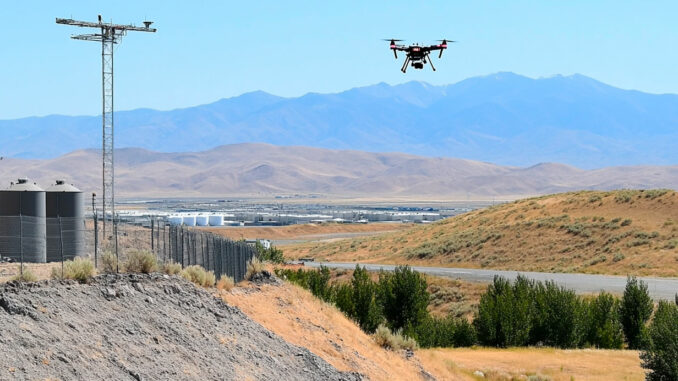
Suspect drones detected around military bases in the USA and UK. Analysis of potential threats and vulnerabilities.
For several weeks now, swarms of sophisticated drones have been observed around strategic military bases in the USA and the UK. These bases are home to sensitive equipment such as B-52 bombers, as well as F-35 and F-15 fighters. Some incursions have also been reported near properties linked to Donald Trump, fuelling speculation about their origin, possibly foreign state actors or terrorist groups. Authorities are struggling to identify these craft, provisionally classified as UAPs (unidentified aerial phenomena). This phenomenon highlights critical gaps in the protection of strategic infrastructures against potential threats.
drone sightings near military bases
Large drones, some comparable to cars, have been spotted near sensitive military bases. These include sites housing B-52s (potential nuclear weapons carriers) and advanced F-35 and F-15 fighters. These drone swarms represent a major strategic risk, particularly if their origin is linked to foreign state actors.
Case in point:
One of the bases concerned, RAF Fairford in the UK, regularly hosts B-52s on nuclear deterrence missions. A swarm of drones in the vicinity could compromise mission security, particularly in the event of espionage or sabotage.
The hypothesis of foreign or terrorist actors
Several hypotheses emerge concerning the origin of drones:
- Geopolitical rivalries:
Tensions with Russia or Iran could explain these activities. The recent authorization by the United States to supply long-range missiles to Ukraine has potentially motivated retaliatory actions. - Terrorist groups:
The FBI has confirmed the presence of terrorist cells with anti-aircraft weapons in the USA. These groups could use drones for attacks against political or military targets.
Technical consequence:
The difficulty of attributing these incursions highlights shortcomings in the ability of current systems to detect and neutralize drones.

Activities around Donald Trump’s properties
In New Jersey, drones have been observed near properties associated with Donald Trump, where heightened security measures are in place. This includes temporary no-fly zones instituted by the FAA around the Picatinny Arsenal and his golf club.
Figures :
- Estimated cost of exclusion zones: €50,000 to €100,000 per week.
- Number of anti-aircraft missiles discovered: 5, according to recent surveys.
The shortcomings of drone defense systems
Despite major investments, anti-drone defense systems such as C-UAS (Counter-Unmanned Aircraft Systems) are showing their limits in the face of sophisticated, swarming drones.
Example of vulnerability:
A coordinated swarm can saturate existing defenses, exploiting loopholes in radars or jammers.
Solution:
Deploy laser systems or interceptor drones for a more reactive response. However, these systems cost in excess of 2 million euros per unit.
UAP or technological threat: the persistent vagueness
Former UK Ministry of Defense official Nick Pope suggests that until these drones are identified, they should be considered as UAPs. This classification raises concerns about the security and technological implications.
Historical fact:
The Picatinny Arsenal has been linked to rumors about the storage of unusual technologies, amplifying theories about an unconventional origin for these drones.
Drone incursions around strategic bases and sensitive locations highlight significant vulnerabilities in air defense. Improved detection systems, neutralization rules and greater international collaboration are needed to reduce these risks.
War Wings Daily is an independant magazine.